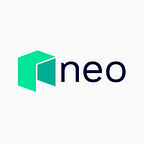NEO Co-founder Da Hongfei Delivered a Speech at China Internet Conference
China Internet Conference: The Future of Blockchain kicked off in Beijing on July 11, 2018.
The conference hosted by Internet Society of China (ISC) was held at National Convention Center and gave the stage to many speakers. NEO Co-founder Da Hongfei was invited to give a keynote speech on Innovation and Challenges Brought by Blockchain.
Regarding the issue, Da introduced the following three perspectives and addressed each one by one.
- Should industrial practitioners necessarily be aware of the blockchain bubble?
- Why does blockchain technology matter?
- What challenges will be brought to blockchain industry in the years to come?
The Nature of the Firm, a book written by Ronald H. Coase, an economist, defines “transaction cost” as a combination of costs including information cost, negotiation cost, execution cost and transaction security cost, etc. These costs were reduced by advances made in the human society, e.g. Information cost was dramatically reduced with the advent of the Internet age , negotiation cost went down with the introduction of the taxi metering mechanism, execution cost was cut down with the introduction of regime and taxing policy. Whereas, whether transaction security cost will be reduced lies in whether a “trustless” system can be built. Blockchain, which itself is a trustless ledger, minimizes transaction security cost.
If market transactions are spontaneous behaviors and instead of suffering losses, every engaging party will benefit from the transactions, the market will benefit eventually. Actually, the more of such open-market transactions, the better the market will operate. Lower transaction security cost means more transactions, thereby benefiting more people. It actually explains how blockchain technology will commercially disrupt the human society. This perspective opens us to a panoramic view of the industry and provides a ground for us to make proper judgement about the nature of blockchain, about whether it’s a bubble.
Blockchain is a book-keeping method in nature. Book-keeping methods have experienced continuous improvement, from basic to sophisticated ones. Underdeveloped book-keeping methods may cripple intra-firm collaboration and work efficiency and in turn raise internal exchange cost way above the market transaction cost. Likewise, the deficiencies of traditional book-keeping methods that a breakthrough can hardly be expected hold organization back from expansion. Blockchain, as a more mature book-keeping method, will facilitate the expansion of the organization and intra-firm collaboration. This is where blockchain technology matters.
Da Hongfei also mentioned the following 8 challenges confronted by blockchain industry.
- Scalability. The scalability and performance of blockchain are yet to improve, which are underlined in NEO’s roadmap.
- Privacy protection. Since blockchain information is publicly available, privacy protection is a big issue.
- Absence of formal verification. Bugs are unavoidable for complex contracts. Therefore contracts should be verified by formal logics to minimize bugs.
- Storage limits. Storage space on the blockchain is globally distributed and expensive, therefore cost-reduction poses a challenge, which can be addressed by NeoFS, a distributed storage protocol proposed by NEO as a solution to storage limits.
- Unsustainable consensus mechanism. Unlike the resource-exhaustive PoW consensus mechanism, the dBFT consensus mechanism adopted by NEO proves to be a sustainable one.
- Lack of governance protocol. NEO proposed NeoX cross-chain protocol as a governance solution.
- Absence of proper SDK. Holding developer experience as its top priotity, NEO has prepared proper SDK for NEO-based developers.
- Quantum attack. The elliptic curve cryptographic algorithm is non-resistant to quantum attack whereas NEO’s lattice-based cryptographic mechanism is quantum-resistant.
Subsequently, Da Hongfei introduced the “container theory”, a recent study he was engaged in, which holds that goods can only be orderly arranged when put in a container. The Box: How the Shipping Container Made the World Smaller and the World Economy Bigger, a book recommended by Bill Gates, also mentions the deep-seated impression people hold against containers — containers only serve as mechanic + logistic support to facilitate global trading practice.
Actually, containers can be compared to tokens in the following three aspects:
- Strictly standardized. Just as containers, tokens are also strictly standardized.
- Highly automatic. Tokens are smart and programmable.
- Economical. Tokens feature low costs and high liquidity.
However, the adoption of containers were met with roadblocks, including price control, docker’s protest, legal and regulative restrictions, compliance and administrative constraints. Tokens highly resemble containers in terms of the development path. Now containers have become an integral part of global trading process.
Da Hongfei believes that tokens are also containers, though featuring higher efficiency and regulatability. In a world driven by physical and virtual development, tokens are powerful enough to drive the progress of human organizations. In the future, tokens will popularize and facilitate larger-scale collaboration.
